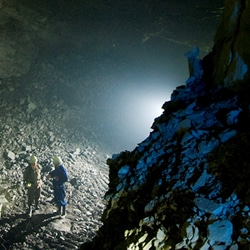
The Konkola Copper Mine (KCM) in Zambia has selected Norphonic mining telephones for their underground mining operations, installed by Becker Electronics – Norphonic’s partner in South Africa.
Located in Chililabombwe, 455 miles north of Zambia’s capital Lusaka, KCM produce over 200,000 tonnes of copper every year. The metal is exported to China and other important Asian manufacturing regions.
Improving Production Output & Safety
As part of a target aimed at doubling their output, KCM wanted to bring the copper quicker to surface by introducing a high-speed train line. This required installing a new signalling and mine shaft communication system 875 meters underground.
Clear and unrestricted two-way voice-communication is essential in any mining operation. Underground telephones are used to prevent damage, reduce down time and to increase production. Since VoIP mining telephones can also prevent fatalities, injuries or help mine site rescue efforts, KCM considered it essential to install high performance mine phones in their underground shafts.
The Norphonic VoIP mining telephones are placed in base stations along the railway line and in the two control rooms – one on the surface and the other underground. A fiber-optic cable network connects the Norphonic telephones to a private branch exchange (PBX). The mine phones have full calling functionality to facilitate seamless communication with site operators as well as the public switched network (PSTN).
Because Norphonic mining telephones are based on unified and open SIP (VoIP) standards, KCM could select the most cost effective PBX and switches without facing any interoperability issues. This also means that the solution is future-proof, since KCM can make changes to their IP network in the future, without having to worry about loss or reduction to the level of service.
Unique Mining Telephone Functions
The Norphonic mining telephones offers unique functions for the control room operators and for underground mine workers. This includes a self monitoring and fault check function, alerting central control room staff if the telephones stop working at any time. The Norphonic mine telephone also comes with a flashing light buzzer which makes the phone easy to locate inside the dark and noisy mine shafts.
The Norphonic hook-switch has no moving parts, making the phone able to operate in dirty environments. This further ensures reliable operation underground.
The Norphonic VoIP shaft telephones are easy to maintain, as any updates can be done from the central control center. This is achieved by connecting the phones to KCM’s supervisory control and data acquisition (SCADA) system. Remote management functionality provide higher up-time compared to traditional analogue telephone systems, which translates into increased safety for mine workers.
Effective communications
The Norphonic VoIP mining telephone installation plays a key role ensuring that the tramming system runs smoothly, free from interruptions, accidents and costly shut-downs. Norphonic VoIP mining phones improves both safety and production output by facilitating communication between miners, locomotive drivers and the control room. The system has also proved cost-effective, by virtue of converging KCM’s IT and Telecom networks.
“KCM is a very wet underground mine, with over 350,000 cubic meters of water being pumped out every day” said Helge Rognstad, sales and marketing director for Norphonic. “Being both water and condensation proof, the Norphonic units are able to operate in this area without problems. The system is also immune to attempted theft or vandalism, which is also an important consideration in several underground mines”.
Helge Rognstad concludes: “We are pleased that Norphonic VoIP telephones helps to keep KCM a safe and profitable mining operation, and we hope that this installation will be a good example for other underground mines in Africa and beyond”.
More Information Available
A full Case Study (PDF) is available on this installation. Click HERE for full details.
